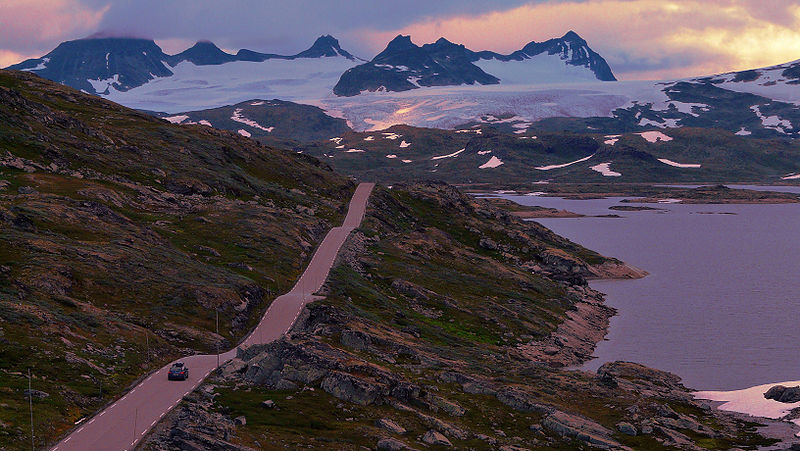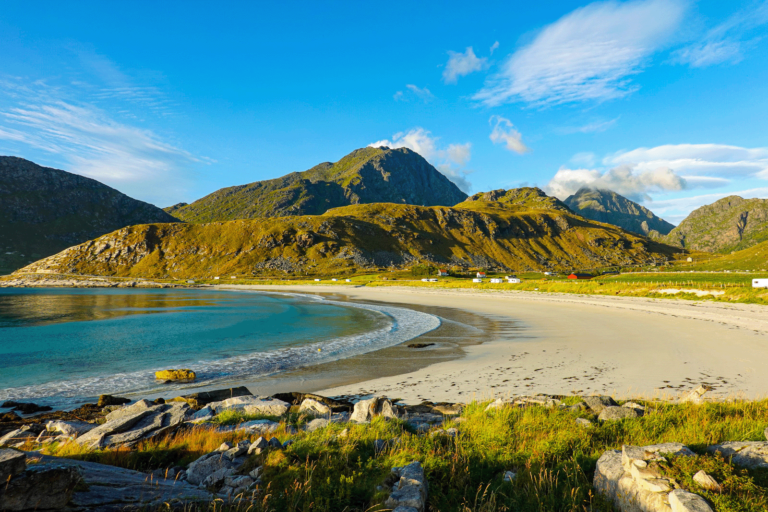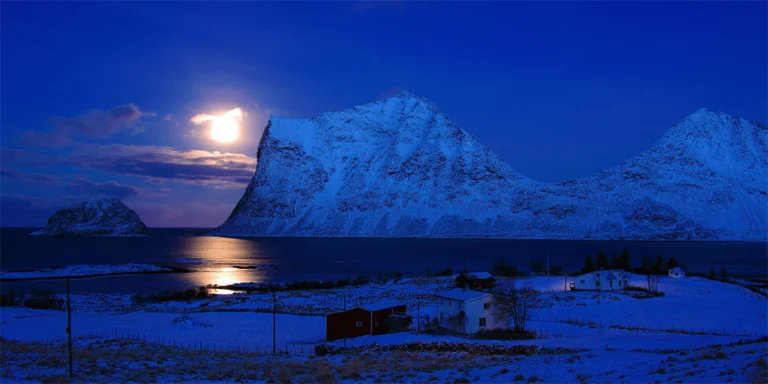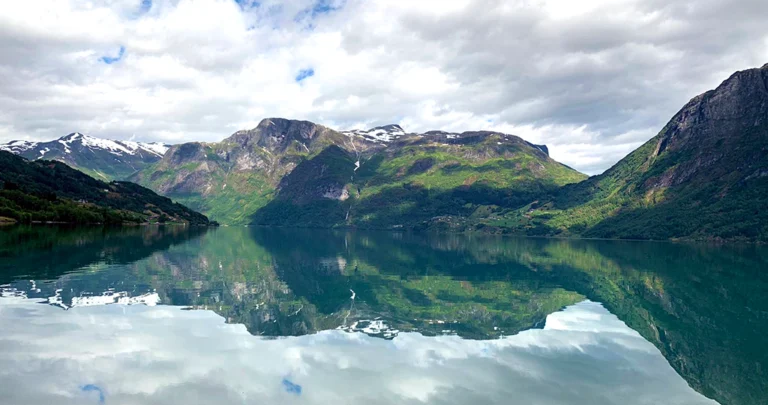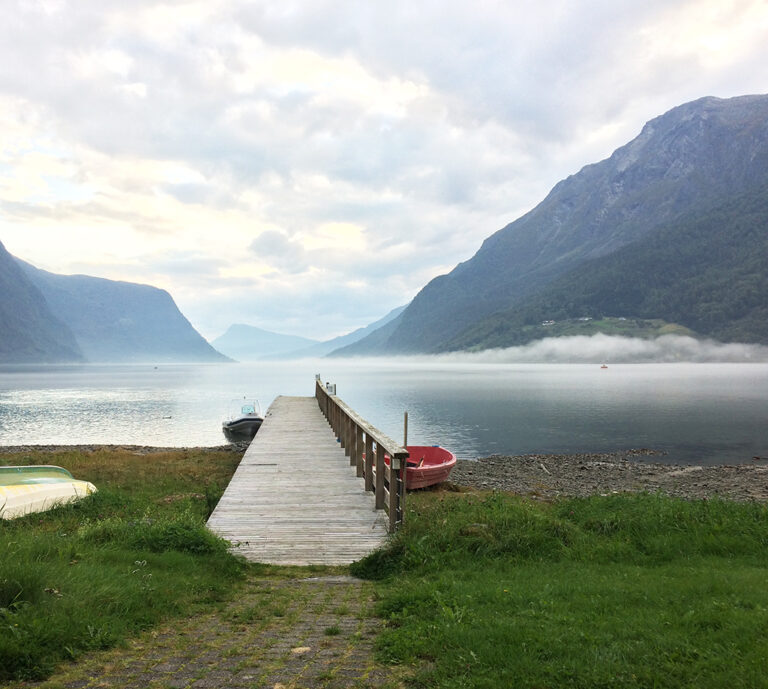Discover the Majestic Sognefjellet: Norway’s Highest Mountain Pass
Introduction to Sognefjellet
Nestled in the heart of Norway, the Sognefjellet Scenic Route is a breathtaking journey that takes travelers from the cultural landscapes of Lom to the charming village of Gaupne. This route is not just a road; it’s an experience that offers a unique blend of natural beauty, cultural heritage, and thrilling adventures. Whether you’re a cyclist, a hiker, or simply a lover of stunning landscapes, Sognefjellet has something to offer.
The Route: From Lom to Gaupne
Starting Point: Lom
Lom, a charming village known for its rich cultural heritage and stunning landscapes, serves as the starting point of the Sognefjellet Scenic Route. Here, travelers can explore the famous Lom Stave Church, one of Norway’s oldest and best-preserved stave churches. The village is also home to several museums and cultural centers that offer a glimpse into the region’s history and traditions.
The Ascent: Climbing to the Roof of Norway
As you leave Lom, the road begins to climb, taking you through lush valleys and dense forests. The ascent is gradual at first, but soon the road starts to wind its way up the mountains, offering spectacular views of the surrounding landscape. This part of the journey is a favorite among cyclists, who relish the challenge of the steep climbs and the thrill of the descent.
The Summit: Sognefjellet Pass
At an elevation of 1,430 meters (4,692 feet), the Sognefjellet Pass is the highest mountain pass in Northern Europe. Here, travelers are treated to panoramic views of snow-capped peaks, glaciers, and alpine meadows. The air is crisp and clean, and the silence is broken only by the occasional call of a bird or the rustle of the wind. This is a place to pause, take a deep breath, and soak in the beauty of nature.
The Descent: From the Mountains to the Fjords
From the summit, the road descends steeply towards the fjords. The landscape changes dramatically as you leave the high mountains behind and enter the lush, green valleys of Sognefjorden. The road winds its way down through a series of hairpin bends, offering stunning views of the fjord below. This part of the journey is a test of nerves for drivers, but the rewards are well worth it.
Points of Interest Along the Route
Jotunheimen National Park
One of the highlights of the Sognefjellet Scenic Route is its proximity to Jotunheimen National Park. This vast wilderness area is home to some of Norway’s highest peaks, including Galdhøpiggen and Glittertind. The park offers a wide range of outdoor activities, from hiking and climbing to fishing and wildlife watching. There are several well-marked trails that lead from the road into the heart of the park, making it easy to explore this stunning landscape.
Turtagrø Hotel
Located near the summit of the Sognefjellet Pass, the Turtagrø Hotel is a popular stop for travelers. This historic hotel has been welcoming guests since the late 19th century and is known for its cozy atmosphere and excellent food. The hotel is also a hub for outdoor activities, offering guided hikes, climbing courses, and other adventures.
Sognefjorden
The Sognefjorden, Norway’s longest and deepest fjord, is the final destination of the Sognefjellet Scenic Route. This stunning fjord stretches over 200 kilometers (124 miles) inland from the coast, with steep cliffs and lush valleys on either side. The fjord is a paradise for outdoor enthusiasts, offering opportunities for kayaking, fishing, and hiking. There are also several charming villages along the fjord where travelers can experience the local culture and cuisine.
Practical Information for Travelers
Best Time to Visit
The Sognefjellet Scenic Route is typically open from late May to early October, depending on weather conditions. The best time to visit is during the summer months, when the weather is warm and the days are long. However, the route can also be beautiful in the spring and fall, when the landscape is painted with the colors of the changing seasons.
Road Conditions and Safety
The Sognefjellet Scenic Route is a well-maintained road, but it can be challenging to drive due to its steep climbs and sharp bends. It’s important to drive carefully and be prepared for changing weather conditions. In the summer, the road can be busy with tourists, so it’s a good idea to start your journey early in the day to avoid the crowds.
Cycling the Route
For cyclists, the Sognefjellet Scenic Route is a spectacular ride, but it’s not for the faint of heart. The route includes challenging climbs and a steep downhill ride to Fortun. It’s recommended to start the ride in Lom and follow the National Cycle Route 6, which is planned to run between Røros and Hardanger. The part of the route that runs along Lustrafjorden is signposted, making it easy to follow.
Accommodation and Dining
There are several accommodation options along the Sognefjellet Scenic Route, ranging from cozy guesthouses to luxury hotels. The Turtagrø Hotel is a popular choice, but there are also several other options in Lom and along the fjord. Dining options are also plentiful, with many restaurants offering local specialties such as fresh seafood and traditional Norwegian dishes.
Traffic and Road Information
For the latest traffic and road information, travelers can contact +47 815 48 991 or check traffic alerts in the Norwegian telephone app.
Conclusion: A Journey to Remember
The Sognefjellet Scenic Route is more than just a road; it’s a journey through some of Norway’s most stunning landscapes. From the cultural heritage of Lom to the breathtaking views from the Sognefjellet Pass and the serene beauty of Sognefjorden, this route offers something for everyone. Whether you’re a seasoned traveler or a first-time visitor, the Sognefjellet Scenic Route is sure to leave you with memories that will last a lifetime.
